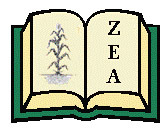
Zea E-Books Collection
Files
Download Full Text (5.4 MB)
Description
New Orleans in 1878 was the most exotic and cosmopolitan city in North America. An international port, with more than 200,000 inhabitants, it was open to French, Spanish, Mexican, South American, and West Indian cultural influences, and home to a thriving population descended from free African Americans. It was also a battleground in the fight against yellow fever (malaria) and in the political upheavals that followed the end of Reconstruction. The continued influx of Anglo-Americans and the renewed ascendancy of white supremacists threatened to overwhelm the local blend of languages, races, and cultures that enlivened the unique Creole character of the city. Writing for an English-language newspaper, Lafcadio Hearn presented the speech, charm, and humor of the Creolized natives on the other side of Canal Street, and illustrated his sketches with woodcut cartoons — the first of their kind in any Southern paper. These vignettes, published in the New Orleans Daily Item during 1878-1880, capture a traditionalist urban world and its colorful characters with a delicate and sympathetic understanding.
Lafcadio Hearn (1850–1904) was born on the Ionian island of Lefkada to a Greek mother and British Army father. His parents’ separation and annullment left him, at age 7, the ward of a paternal great-aunt in Dublin. She sent him to Catholic schools in Ireland, France, and England, but family bankruptcy interrupted his education and led to his emigration to America in 1869. His promised contacts proved worthless, and he was left broke and alone in Cincinnati, Ohio. He found work there with the expatriot English printer and socialist Henry Watkin and later as a newspaper reporter for the Daily Enquirer. In 1874 he married Alethea Foley, a 20-year-old African American woman (in violation of Ohio’s anti-miscegenation law). They divorced in 1877, and Hearn moved to New Orleans where he lived ten years and wrote for several newspapers, starting with the Daily Item in June 1878, and later for national publications Harper’s Weekly and Scribner’s Magazine. He went to the West Indies as a correspondent 1887-1890, and then to Japan. He married Koizumi Setsuko in 1891, became a Japanese citizen in 1896, adopting the name Koizumi Yakumo, and taught at high schools and universities. His published books on Japanese culture were instrumental in introducing Meiji Japan to an international audience. He was succeeded as professor of literature at Tokyo Imperial University by Natsume Sōseki.
Charles Woodward Hutson (1840-1936) was a Confederate veteran, lawyer, painter, author, and professor of Greek and modern languages at Southern colleges.
ISBN
978-1-60962-224-4 (ebook)
Publication Date
1-1-2022
Publisher
Zea Books
City
Lincoln
Keywords
New Orleans, Creole, Canal Street
Disciplines
African American Studies | Modern Literature | Nonfiction | Other Feminist, Gender, and Sexuality Studies | Other French and Francophone Language and Literature | United States History | Urban Studies and Planning
Recommended Citation
Hearn, Lafcadio and Hutson, Charles Woodward, "Creole Sketches" (2022). Zea E-Books Collection. 114.
https://digitalcommons.unl.edu/zeabook/114

Included in
African American Studies Commons, Modern Literature Commons, Nonfiction Commons, Other Feminist, Gender, and Sexuality Studies Commons, Other French and Francophone Language and Literature Commons, United States History Commons, Urban Studies and Planning Commons


Comments
Sketches by Hearn from 1878-1880, collected by editor Charles Woodward Hutson and published in 1924 by Houghton Mifflin Company. Now in the public domain.